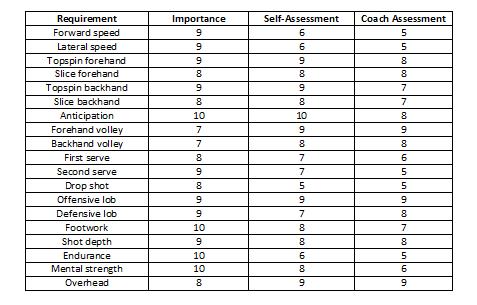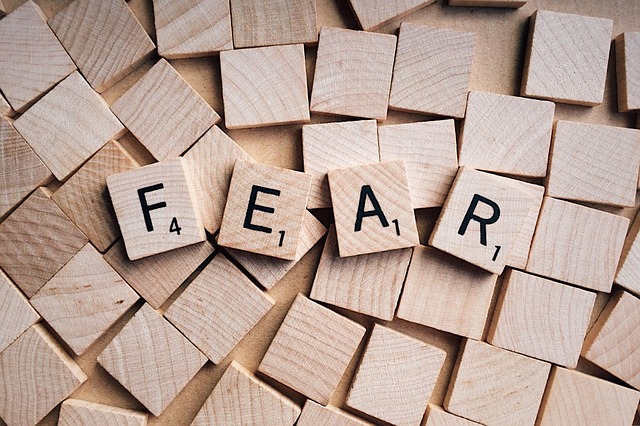How To Determine Your (Relevant) Weaknesses
In order to determine your weaknesses, presumably so you can address them and improve in those areas, you must first put a frame around the question: “what are my weaknesses.” This means that in order to identify and address your weaknesses, you must first determine which weaknesses are relevant. What is it that you are trying to accomplish? For example, if you’re trying to become a great entrepreneur, it wouldn’t be particularly relevant that you can’t sing very well, unless of course, your business is a singing telegram service with you as the solo performer. Likewise, if you’re trying to become a great marathon runner, it wouldn’t be particularly relevant that you don’t excel at the 100 yard dash.
First, of course, you must decide what it is you are trying to be great at. Be as specific as you can. For example, just saying “running” is not sufficiently specific. It should be more along the lines of: running the 100 yard dash, the mile, marathons, etc – you get the idea. Likewise, it wouldn’t be sufficient to say, “I want to be great at business.” It should be more specific, such as, “I want to be a great startup entrepreneur,” or “I want to be a great CEO of a medium-sized company,” or “I want to become great at identifying undervalued companies, buying them, and then selling them at a large profit.” What is it that you are trying to be great at? Write it down as specifically as you can.
In order to further frame the question, let’s go back to an earlier concept about how to determine what it takes to be great at something. There we discussed that there are four principal ways to find out what it takes to be great at something (below is a summary of each of the four ways; for the full article go here):
The first, quickest and most direct method of obtaining the requirements for becoming great at something, is to go directly to the “horse’s mouth”. That is, you should contact one or several people who have already done what you’re trying to do and ask them how they did it. Try to get as many specifics as possible.
The second method of finding the key requirements is to talk to one or several coaches in that domain. These could also be referred to as subject matter experts (SMEs) or maybe even SMEs with a bit extra, as they have chosen to be coaches and thus are likely oriented toward understanding how to maximize performance in your particular endeavor.
The third manner of uncovering the key requirements for greatness in your endeavor is to read books by experts in the field. Reading appeals to some folks and does not appeal to others. There are also many books on tape now, which you can listen to when you are driving or exercising. You can also find many instructional videos if you happen to be someone who learns better by watching video.
The fourth way to discern the key requirements for achieving greatness in your field is to watch true professionals in action. If what you’re trying to become great at is a sport, watch as many events as you can, but don’t just watch as a fan or casual observer; watch as a student of the game. Use the stop action (pause) on your DVR. In many endeavors, you can also often watch “professionals” in action by just asking permission.
These approaches to determining how to be great at something are not mutually exclusive. You can and should use of mix of these approaches to accelerate and optimize your learning.
Once you have a good idea of what it takes to become great at your chosen endeavor, you are now ready to compare your personal abilities against the “requirements.” Often times, it’s a good idea to take a look at this on your own, but then to follow up with a coach or some other qualified third party, as it can be difficult to be objective in looking at your own abilities. That said, if you don’t have access to such a third person, a self-assessment is far better than doing nothing at all and just fumbling along blindly.
How you do this assessment of your weaknesses may vary, but one simple way to do it is to make a basic matrix that includes the key requirements, the relative importance of each requirement, then your and another person’s ratings of your abilities. The following is a simple (and incomplete) example of such a matrix for someone looking to become a great clay-court singles tennis player. The ratings are on a scale of 1-10, with ten being most important and the highest attainable level for the self- and coach assessment.
We won’t go through this assessment in excruciating detail, but let’s focus in on a couple of key points. First, bear in mind that this is a simple and incomplete example of an assessment. While something like this sample will get you much of what you need to assess your strengths and weaknesses, if you truly want to become great at something, whatever it may be, you’ll want to take this assessment to as granular a level as possible, so that you can really home in on the key areas you need to work on. Second, it’s key to focus in on those areas that have high importance, on which you and/or your coach also rated you with a low score. It is by prioritizing this way that you will optimize your efforts and get the most from the time you invest. It should also accelerate your improvement, which will in turn give you additional confidence and likely better performance in all areas. Third, based on this example, you can see the importance of getting the input of a coach or another qualified third party, as the tendency in most cases is to rate yourself more generously than a third party may. Also, it is likely that, if selected well, that third party or coach will have a much broader frame of reference in the selected endeavor than you do and will thus be able to give you a more objective and complete assessment. Finally for now, note that although this example assessment pertains to a sport, it is equally applicable in almost any endeavor at which you are trying to become “great.”
You may recall from a previous article that 10,000 hours of “deliberate practice” has been identified as the benchmark for what it takes to become an expert in anything. Deliberate practice refers to a form of practice that involves not just simply showing up, but rather very deliberately setting objectives, performing practice, and getting feedback on the results. Implicitly such practice involves zeroing in on weaknesses and attempting to address and correct them on an ongoing basis. In other words, to use golf as an example, just going to the driving range and hitting a bucket of balls is not sufficient. Rather, you should go to the driving range with a specific objective or set of objectives in mind, attempt to accomplish them, and note where your results vary from those intended. You should then determine what errors or weaknesses caused the variance, and then work on correcting those issues. It is in this way that you are most likely to see continuous improvement and progress toward your objective of becoming great. As noted above, this approach applies equally to sports and non-sports endeavors.
I look forward to your thoughts, comments and questions.
Paul Morin
paul@CompanyFounder.com
www.CompanyFounder.com .





Weaknesses can make you a better person, once you identify them. I like your approach. It requires a lot of self-knowledge. I think for myself, a third-party coach would work better. Glad to know also that even if you have weaknesses, there are ways to improve and get better at whatever it is. Thanks for the post.
Nice post. I constantly check this blog and I’m impressed! Very helpful info specially the last part I was seeking this particular info for a long time. Thank you and good luck.
I was seeking this particular info for a long time. Thank you and good luck.
Have you ever considered about adding a little bit more than just your articles?
I mean, what you say is fundamental and
everything. But think about if you added some great photos or video clips to
give your posts more, “pop”! Your content is excellent but with pics
and videos, this blog could certainly be one of the best in its field.
Awesome blog!
Thanks for your comment. Yes, more photos and video coming shortly.